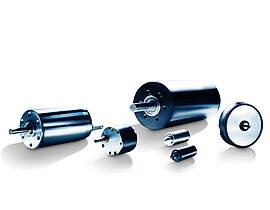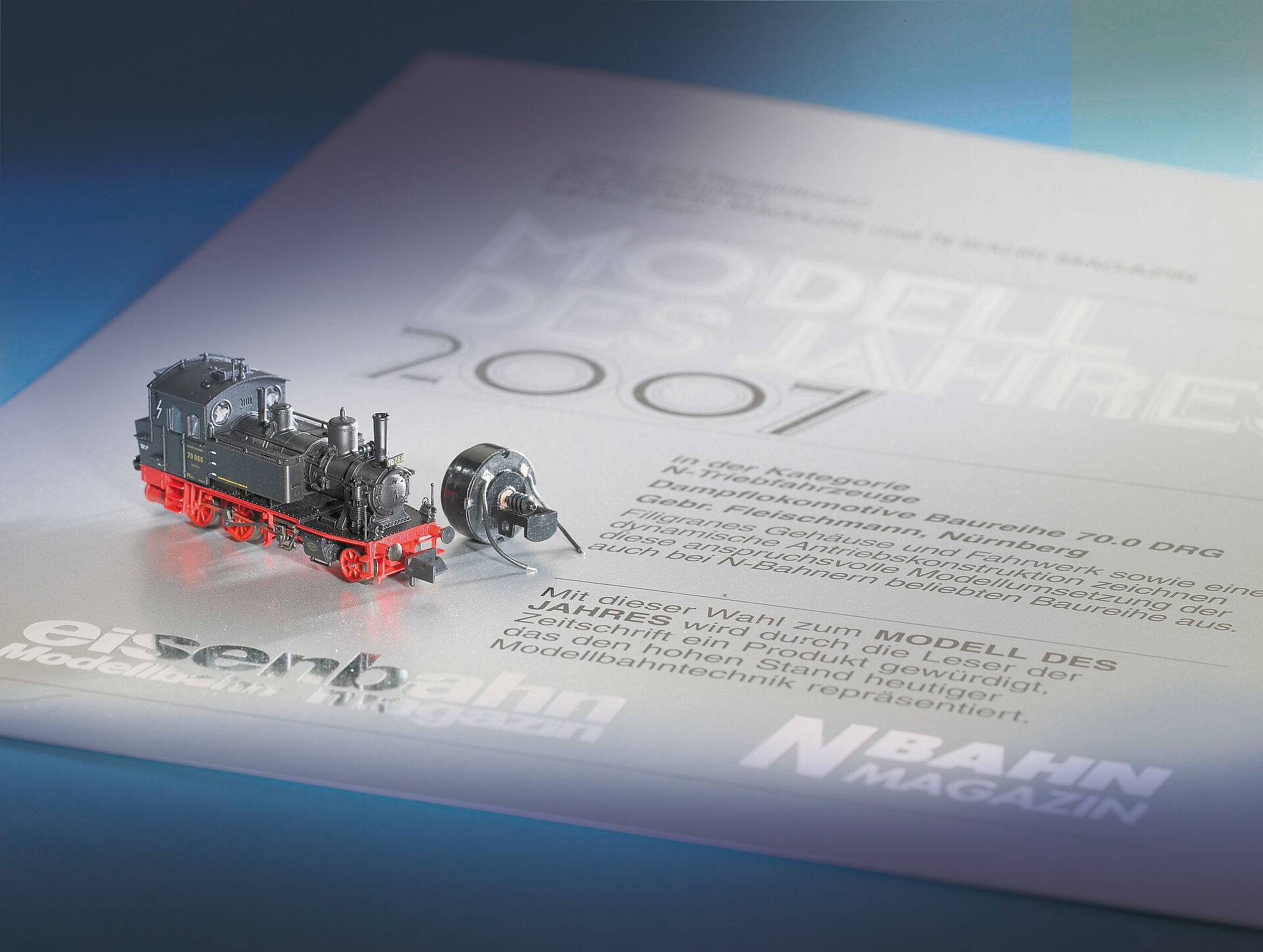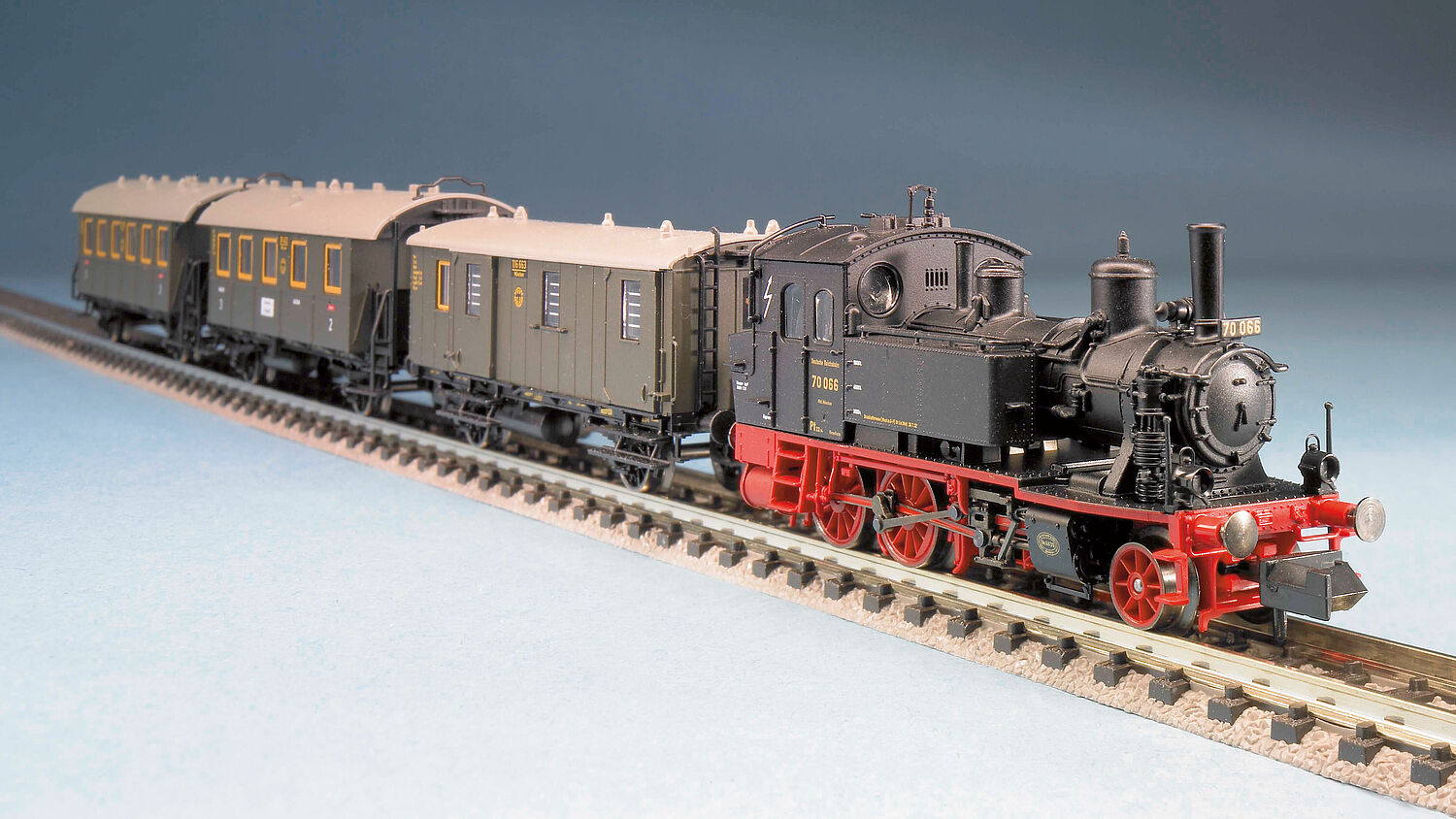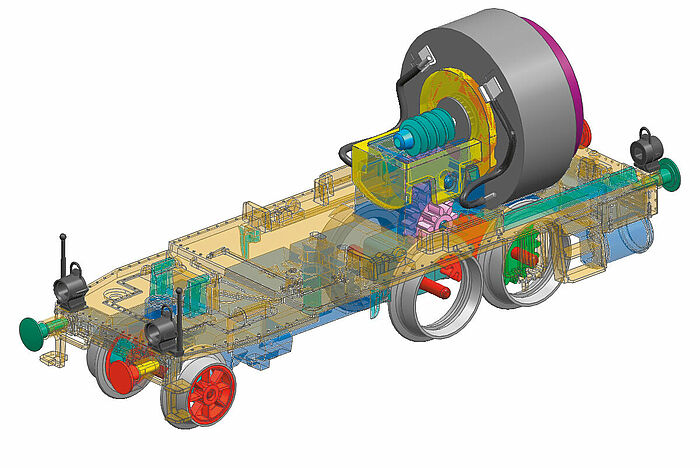These days, model train sets are popular with adults and children alike. Depending on the use, a wide choice of toy trains and exceptionally faithful replica models is available. As one of the leading providers of high-end model train systems, Nuremberg-based Fleischmann has now developed a new model. Their miniature replica in N gauge of the Bavarian 70 series locomotive (BR 70) from 1930 is both convincing and highly detailed. Even the lettering measuring just tenths of a millimetre high can be read perfectly with a magnifying glass. Naturally this passion for perfection does not stop when it comes to the drive technology.
Major strides have been made in development here, with the professional model makers at Fleischmann bringing microdrive specialist FAULHABER into the developer pool for this very purpose. This enabled a specific tailored concept to be formulated that considered drive requirements, model size and characteristics right from the start.
Building a model train system on scale 1:160 (N gauge) involves working with very small units. In this case, the BR 70 locomotive in N gauge is only approximately 57.8 mm long when measured buffer to buffer. Weight is also low at just 36 g. It is nevertheless essential that every detail is accurate and that the model’s driving performance is appropriate. The locomotive’s undercarriage and body are die-cast in metal with added plastic parts. This allows even the smallest details to be faithfully replicated in series production. To match the original, realistic lights are integrated using tiny, warm-white LEDs. The lighting switches to the direction of travel automatically.
When it comes to the drive, certain mechanical and physical conditions need to be considered. As on large locomotives, traction (and, on the model, power transmission) between the wheel and the track is a crucial factor. A small motor generates only low torque, but requires a high engine speed. The engine speed must now be geared down relative to the model scale and the size of the drive wheels. Other electronic components can transmit digital control signals to the drive or lights and auxiliary equipment, for example. All this must function reliably out of sight for many years while taking up minimal space.
High-performing microdrive
In the case of the model locomotive featured here with a weight of just 36 g and a relatively high engine speed, quiet running is a particular issue. Even the slightest imbalance in the rotor on this lightweight locomotive will cause vibrations and possible resonance within the model railway system on which the rails are laid. The issue was resolved by deploying a high-precision flywheel on the motor shaft. Flywheel wobble is just 0.03 mm. Thanks to this exact design, the motor and flywheel are as large as the locomotive body permits. The advantage of this approach is that the large flywheel, which stores kinetic energy, delivers excellent running performance over points and sets of points, even during very slow shunting operations. This is particularly important when there are brief interruptions to the power supply due to the track.
A version of this locomotive with an integrated digital decoder is specially adapted to the drive motor running in this way to make the slowest movements appear more realistic. Effortlessly absorbing the axial forces of the first worm gearing stage, the motor’s durable, lifetime-lubricated bearings enhance this microdrive, which has been optimised for model making. Modern microdrives can be customised for virtually any deployment scenario. The sooner drive specialists are involved in developing an application, the smoother the process of integrating the drive. In this way, specific key characteristics such as special configurations, short-term overloading, extremely quiet running, etc. can mostly be achieved with ease.
Although ready-made drives meet many requirements, for high-end and specialised applications, customisation is the answer. Microdrives are no longer limited by technology – instead it is up to developers to find new creative possibilities, not just in model making.
Products



